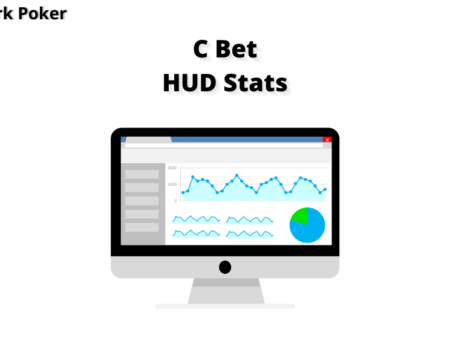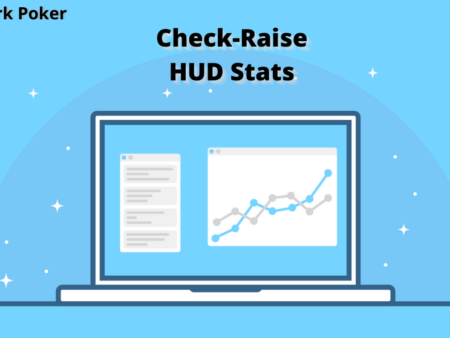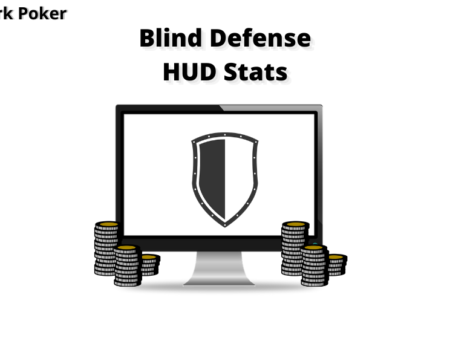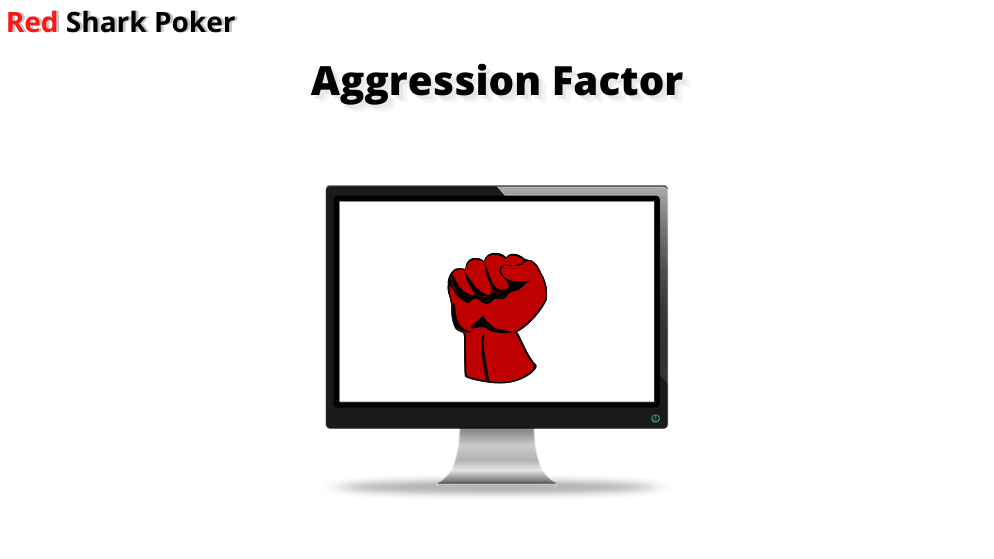
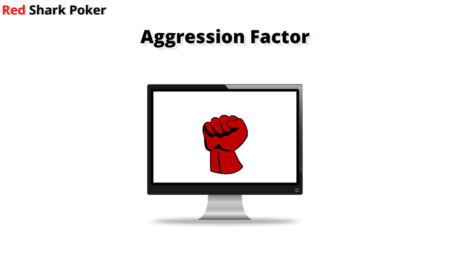
This article is for those poker players who are thinking of using HUD software or already using one. If you are a casual poker player who wants to upgrade your skill, we advice you to continue reading to learn about an important poker statistics – The Aggression Factor in Poker.
Aggression Factor HUD stats is one of the most important statistics that you should incorporate in your HUD. Aggression Factor, along with VPIP and PFR, gives a better picture of how aggressive or passive a player is on the post-flop.
How to Calculate Aggression Factor?
The mathematical expression of aggression factor (AF) is:
AF = Total Bets + Total Raises/Total Calls
As you can see, this aggression HUD stats does not take checks and folds in its calculations. So, this shows how much a player likes to call, not how much he likes to check and fold.
Common AF Stats
- AF of 1 = Extremely Passive
- AF of 2 = Moderately Passive
- AF of 3 = Moderately Aggressive Player
- AF of 4 and above = Over Aggressive Player
AF HUD Examples
Let’s look at some of the examples to understand AF HUD stats better. You should have data of at least 200 to 300 hands of your opponent to get an accurate read.
Player A: VPIP 52/ PFR 10/ AF 1
By comparing VPIP and PFR, we can identify this player as a fish. He enters the pot more often with a call and shows less aggression post-flop. You can extract a lot of value when you have a strong hand, as such players tend to call bets post-flop. Do not attempt to bluff with weak hands as they will most likely call. When such a player bets, you can be sure that he has hit something. You must have a better hand than his to make a call or raise when he bets.
Player B: VPIP 12/ PFR 10/ AF 5.9
This player is just the opposite of the player discussed above. His VPIP and PFR shows that he is a super tight player who plays fewer hands and usually enters the pot with a raise. He has a high aggression factor of 5.9, which suggest that he does not like to call bets. If the board favours his tight range, he will play aggressively post-flop. If you are out of position and he calls your bet, you need to play with caution. If he calls your bet, his call will suggest that he is holding a strong hand.
Player C: VPIP 38/ PFR 25/ AF 10
The VPIP and PFR suggest that the player is a loose-aggressive player who is very aggressive post-flop. This player dislikes calling and plays post-flop mostly with a bet or raise. It is better to have a position on him so that you can calculate your pot odds to make a call. Enter with a strong hand, and when you have the nuts, you can slowplay and allow him to continue his aggression.
Player D: VPIP 23/ PFR 15/ AF 2.9
The VPIP and PFR show that the player is a TAG with a balanced aggression factor. This player is more likely to be an expert player who has balanced his post-flop aggression. You need to be careful while playing against such players, especially if he is in a late position. Such players are mostly positional players who get aggressive from late positions. So, play with a strong hand, and preferably from a late position against such players.
Other Aggression HUD Stats
HUD software offer stats like Aggression Percentage and Aggression Frequency these days. These stats include more variables in their mathematical expressions.
Aggression Percentage (Agg%)
The mathematical expression of Aggression Percentage (Agg%) is:
Agg% = (Total Bets + Total Raises) / (Total Bets + Total Raises + Total Calls + Total Checks) X 100
Aggression percentage includes “Checks” in its mathematical expression. However, checks can complicate this equation as checks mean a lot of things. A check could mean a check-raise that could create an imbalance in the equation.
In some HUD software, you can use both aggression factor and aggression percentage together to get an accurate read. If you have both in your HUD, look out for these relations:
- High Agg% and Low AF = Player calls more and rarely checks
- Low Agg% and High AF = Player checks more and rarely calls
Correlate these two stats to get a better picture of your opponent’s post-flop behaviour.
Aggression Frequency (AFq%)
The mathematical expression of Aggression Frequency (AFq) is:
AFq = (Total Bets + Total Raises)/(Total Bets + Total Raises + Total Calls + Total Folds) X 100
These stats include “Fold” in its equation and ignores checks, which offers a comprehensive post-flop aggression statistic. When a player’s aggression frequency is less than 35%, he is too passive. And, if a player’s aggression frequency is more than 65%, he is considered too aggressive. It is better to check the stats on each individual street to analyse the post-flop behaviour on the flop, turn and river.
Conclusion
Aggression Factor HUD is more reliable with a sample size of over 500 hands. The stats are best used when you compare with the VPIP and PFR. To recap the common AF stats, look at the numbers below:
- AF of 1 = Extremely Passive
- AF of 2 = Moderately Passive
- AF of 3 = Moderately Aggressive Player
- AF of 4 and above = Over Aggressive Player
With the availability of other stats like Aggression Percentage and Frequency that include more variables, Aggression Factor may seem a bit outdated. However, AF is still a reliable stats that shows your opponent’s post-flop behaviour.

